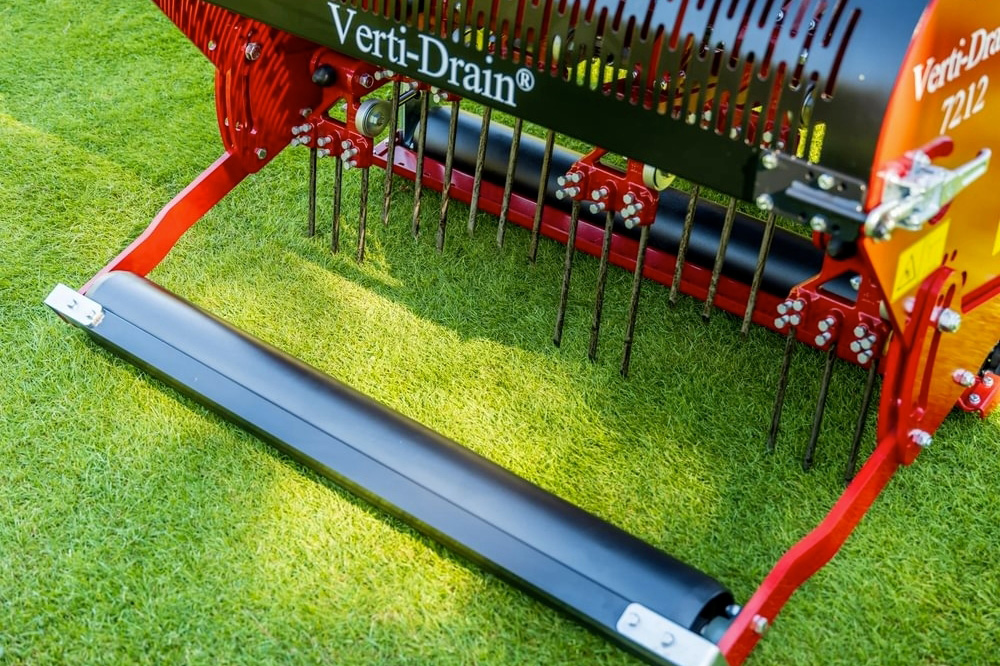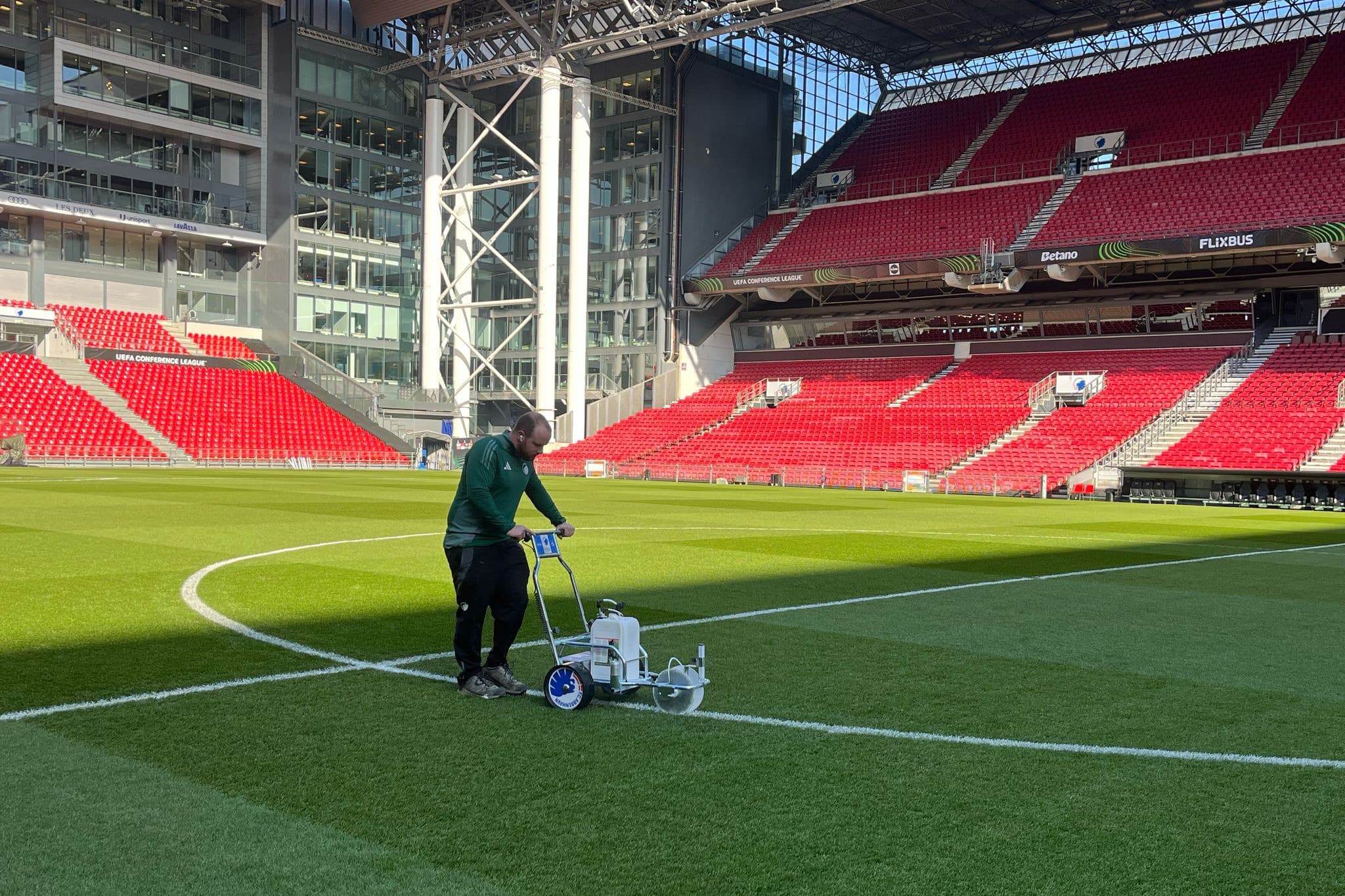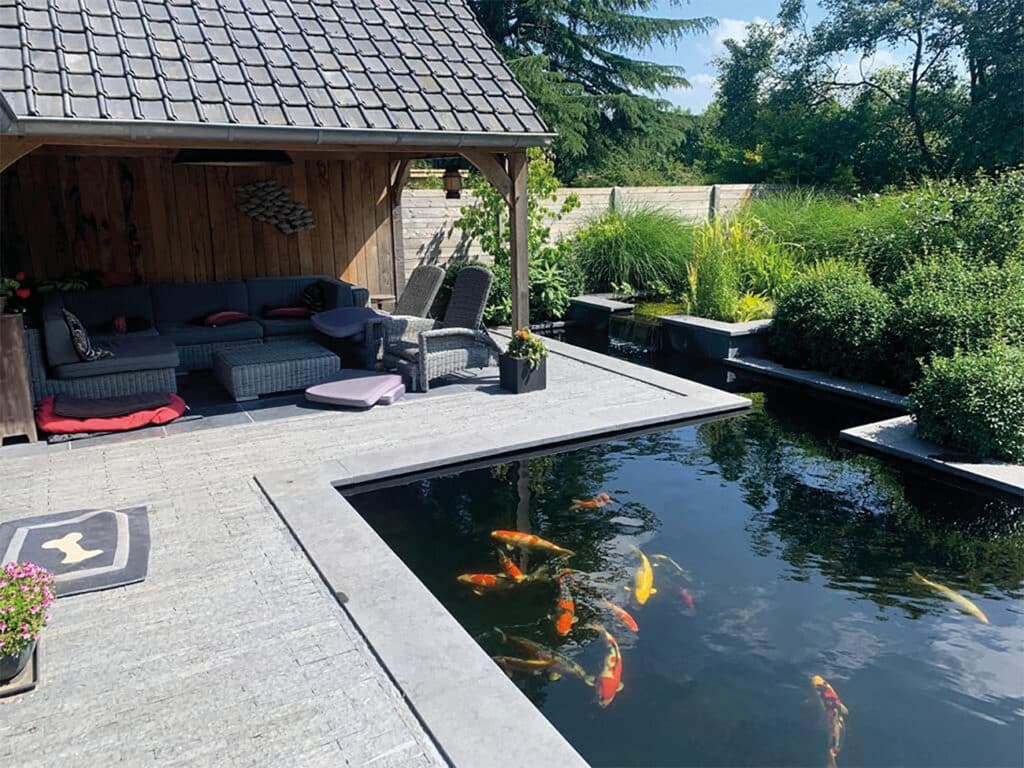
Considerations when installing pool edging
The materials used in and around the pool often have to meet specific requirements - some more obvious than others. For example, we all understand that pool surrounds and steps must have adequate anti-slip properties, but not everyone is aware of the impact that electrolysis-based water treatment systems can have on limestone, for example.
"Thus, there are still a number of hidden or at least underexposed areas of concern," believes Els Meynen of garden materials dealer E.L.S. Garden. "Some we or our customers have had to discover by trial and error, but in most cases, with the necessary product and materials knowledge, you can already deduce many things. So when we supply products for in or around the pool, we gladly transfer that knowledge."

Measuring and fitting
For pool edging, at least, the material options are legion. Granite, limestone or ceramic...: all are suitable for edging the edge of the pool in an attractive and safe manner, with straight or rounded nose. "With pool edging, the material itself is not the main concern; rather, the geometry is. After all, a pool is not sized for the available sizes of coping stones. It is the coping stones that have to be adapted to the dimensions of the pool. That sometimes requires some thinking, fitting and possibly cutting."
"For an aesthetic and uniform whole, for example, you want to avoid having to fit another small 20-centimeter piece between all the 100-centimeter copings. To make this easier, we have numerous corner pieces and fitting pieces available of all materials in addition to the classic dimensions. That way you can better adapt the selection to the specific dimensions of the pool. Here and there you may still have to trim, but at least a 112-centimeter piece between all 100-centimeter borders will blend in more nicely than an extra 12-centimeter piece."
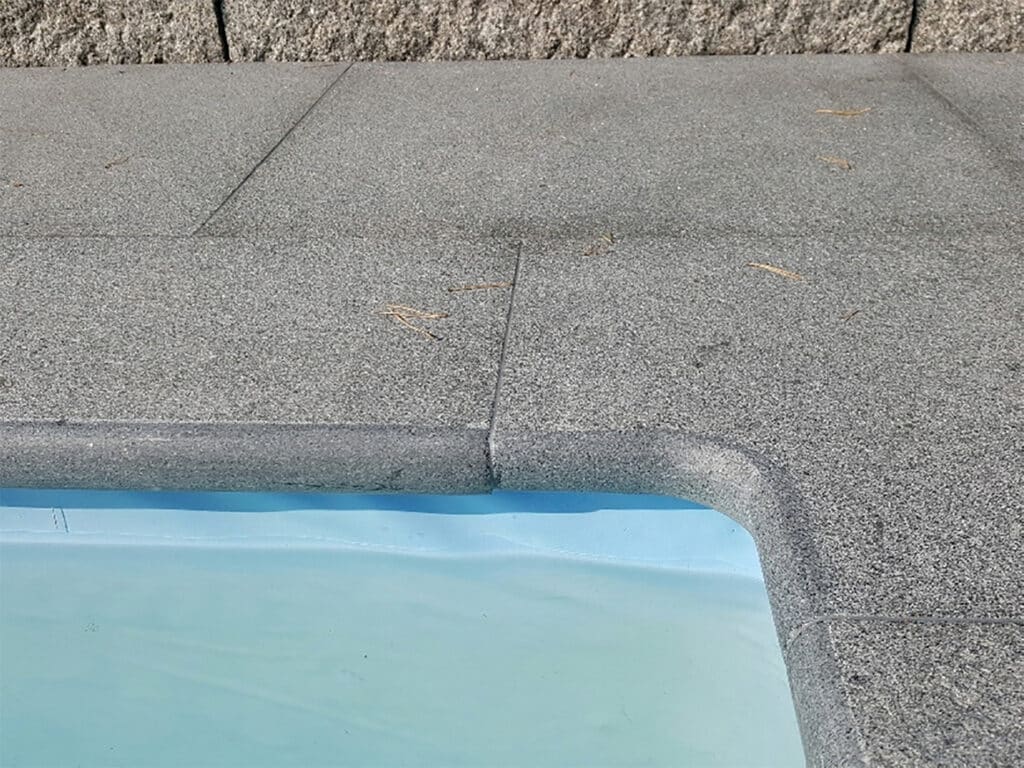
Underwater
Besides the pool edging itself, E.L.S. Garden also offers the necessary coverings for pool stairs and lounging areas. In the first case, these are standard elements, available with a round or straight nose; in the second case, they are usually custom-made. However, these are always elements in burnt or brushed granite G54.
"This is for a very specific reason," Els Meynen explains. "After all, these elements are constantly under water, which undergoes a certain treatment in a swimming pool. In the past, that was classical chlorine dosing, but today electrolysis is increasingly used. However, these systems also affect the acidity of the water, which can have a negative impact on limestone in particular. Indeed, they will deteriorate faster in such an environment. Granite is less sensitive to this, and thus offers more assurances for underwater applications."
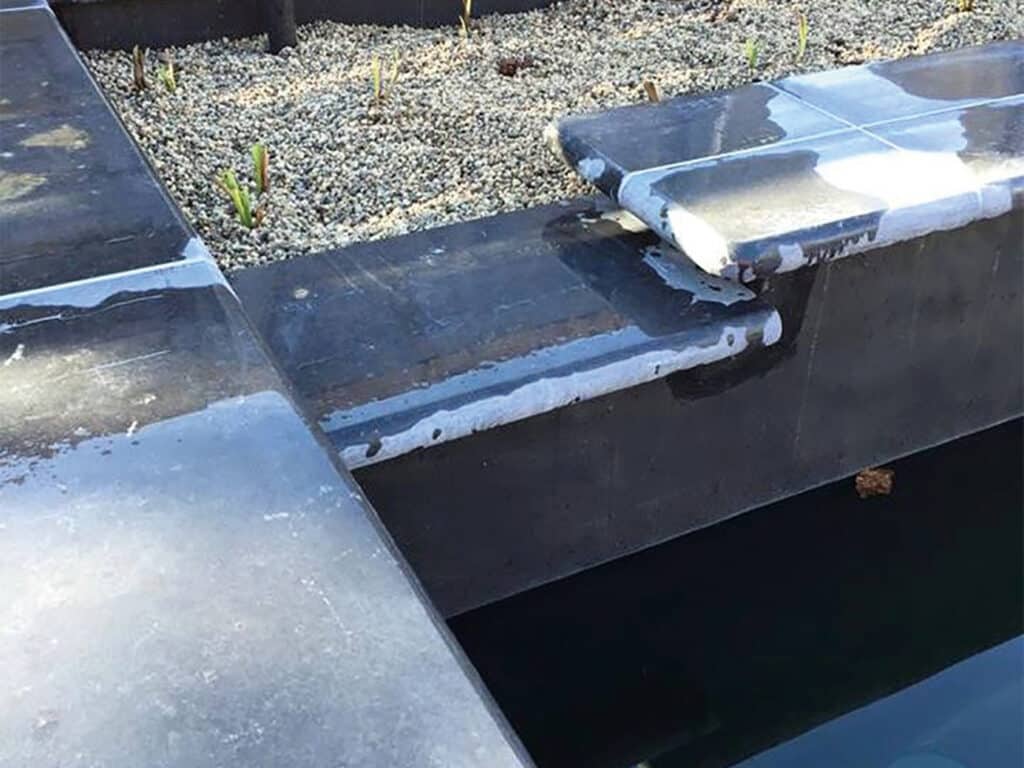
Grouting and bonding
The granite steps are manufactured to fit standard polyester pool steps. Installation is by gluing. "Cement will simply not grip on the polyester steps because that surface is not moisture absorbent. So you have no choice but to glue the steps. This is just as true, by the way, when you need to install coping or other stones on a pool liner."
A classic point of concern when grouting pool surrounds, Els Meynen remembers, is the nose. "With granite and natural stone, a cement grout is traditionally used, but due to the repeated impact of water, it will eventually crumble at the level of the nose. Ceramic edging is even more challenging, because the edges of these stones are usually not treated and cement consequently has no grip on them. The alternative, to work with insert sand, does not offer a solution for an open detail such as the nose."
Regardless of the material, E.L.S. Garden therefore recommends a siloxane-based grout for finishing pool edging. "That adheres nicely to the various materials, has no shrinkage but plenty of stretch, and holds up nicely even under the influence of water. So the pool edging is long-lasting and taken care of down to the last detail."
